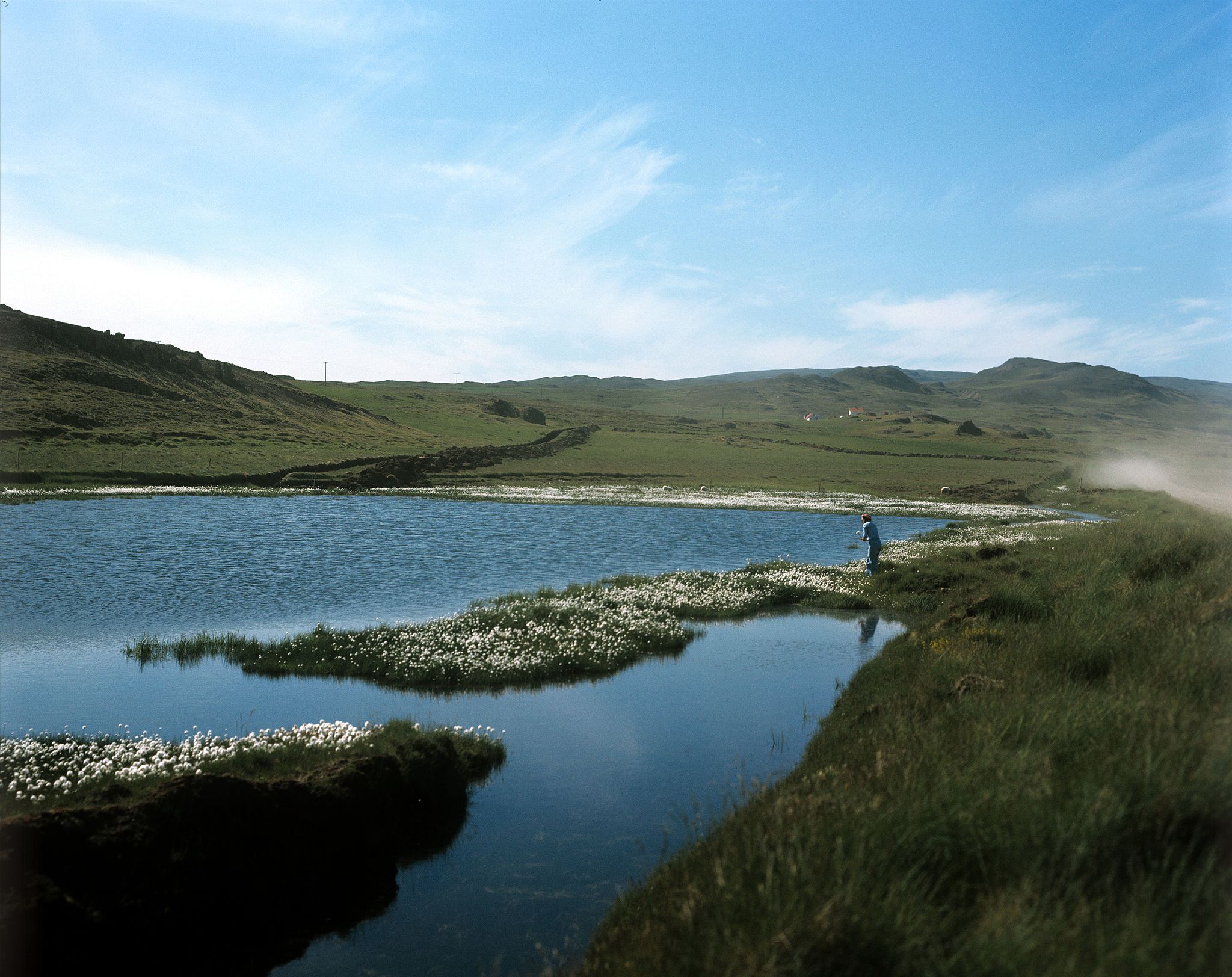German-Icelandic trade relations: the case of Eiríkur Árnason
Bart Holterman, 30 March 2017
Trade in the North Atlantic was neither simply an exchange of goods between ports in Iceland and in Germany, nor did the islanders stay at home and wait for German merchants to show up each spring. In some cases, more complex relations between islanders and Germans existed, and in what follows we will present an example from Iceland to highlight the complexity of the trade relations between Icelanders and Germans. Germans were not allowed to settle in Iceland, but Icelanders were free to move or travel to Germany, which some did, and established networks of their own. Sometimes these links can be reconstructed in considerable detail with the help of both historical and archaeological sources. In this post, we will focus on one such case, that of Eiríkur Árnason Brandssonar (c. 1530-1586), sýslumaður (bailiff) of Múlaþing district in the East of Iceland.
Eiríkur Árnason was a powerful man in Iceland, who repeatedly got into trouble with Guðbrandur Þorláksson, bishop at Hólar. Eiríkur was appointed klausturhaldari, the keeper of the property of Skriðuklaustur monastery, located in the valley of lake Lagarfljót about 50km inland from the southeastern coast of Iceland. The monastery had been secularized in 1554, and the now royal property was administered by the klausturhaldari. Eiríkur, whose grandfather Brandur Hrafnsson had been the last prior of the monastery, held this office between 1564 and 1578.

So called Bartman jug made of Rhenish stoneware, found in the house of the klausturhaldari of Skriðuklaustur (image Helgi Hallgrímsson).
In 1584, it seems that Eiríkur settled in Hamburg. He embarked on a voyage to Hamburg on the ship of Jochim Warneke and shortly afterwards married Anna Korfemaker and bought a brewery. The next year he travelled back and forth between Iceland and Hamburg and it is most likely that he was a member of the fraternity of St Anne that united most merchants and sailors who travelled to Iceland. In 1586 he died in Hamburg and was buried there at the cemetery of St Jakob.
There are numerous sources which shed a light on Eiríkur’s contacts with German merchants in Iceland. In the fjord now known as Berufjörður, south of Skriðuklaustur, Bremen merchants (who called the fjord Ostforde) had been trading for a long time. In 1575, a conflict broke out between two of them, Bernd Losekanne and Christoffer Meyger, due to alleged mutiny. In the ensuing court case before the Bremen city council, one of the problems discussed was the ownership of a barrel of osemund (iron from Sweden) which Losekanne had sold to Eiríkur Arnason but which was left in the merchant´s booth, of which Eiríkur as bailiff had the keys. Also, a load of vaðmál he left in the booth was destined for a Hamburg merchant named Matthies.
It is clear that during his time as sýslumaður and klausturhaldari, Eiríkur had been trading actively with the German merchants in the area. This is also attested by contemporary objects. From the house of the klausturhaldari stems a complete Bartman jug of the 16th century, a common pouring vessel of that time, produced in one of the major stoneware production centers along the Rhine (such as Frechen, Raeren or Cologne). It is more than likely that this jug was used by Eiríkur who had bought it from the German merchants in Berufjörður. Another link is the gravestone of his mother Úlfhildur Þorsteinsdóttir which is thought to have been imported from Germany by Eiríkur.
Eiríkur’s connections with German merchants probably went further than that. In 1580 Bernd Losekanne and Christoffer Meyger (who had apparently reconciled) complained about interference of Hamburg merchant Matthias Eggers in Ostforde. Eggers, on the other hand, said that he had a general trading license for Iceland which obviously permitted him to use any harbour he liked. Losekanne and Meyger then replied to this that this was unfair because Eiríkur had acquired that license for himself when he had visited the Danish royal court, and had entered into a trade agreement with the Hamburg merchants, in return for a part of their ship. Eggers was also probably the man named Matthies for which Eiríkur had put aside the vaðmál in 1575.
Merchants from Bremen are known to have entered into trade relations with Icelanders as well, but that might be a topic for a future post.
References:
Friederike Christiane Koch, Isländer in Hamburg 1520-1662. Beiträge zur Geschichte Hamburgs vol. 49 (Hamburg 1995) pp. 150-153.
Staatsarchiv Bremen, 2-R.11.ff.
Staatsarchiv Hamburg, 111-1, Cl. VII Lit. Kc. no. 11, Vol. 3.
Posted in: Stories
